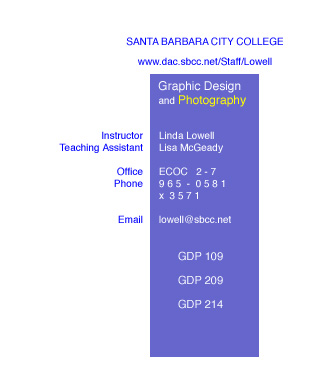 |
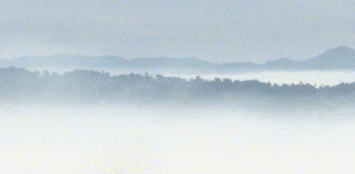 |
|
G
D P 1 0 9 - P h o t o I
Wednesday's
- 8:00am - 12:50pm / Classroom
- OE 184
Linda Lowell
- GDP, Photography Chair
Course
Outline
Jump to THIS WEEK
|
| |
DAC
Lab Site
Fonts for Mac and PC
|
|
Week #1: 1/23
|
• Intro
Three-tiered Focus for GDP109: technical, conceptual, digital.
• Materials:
slide film ISO 100 (Fuji Sensia, Kodak E100s), slide pages, sharpie,
magnifying loupe
• Photo
Resources: Samy's (photo supplies), Armstrong's (processing), Calumet
(photo supplies), Color Services (processing), Russ' Camera (photo supplies).
• Rentals:
Samy's ($50 for a 35mm camera, lens and camera bag for the semester).
• Video:
RadioHead; tracks 2 and 3
• Visual Grammar - SEE (objective/formal); THINK (cognitive/story
telling) and FEEL (emotions) -- there are no new subjects, great photographs
are RESTATEMENTS WITH A DIFFERENCE.
• John
Szarskowski's great photograph: Grace, Economy, Tension, Balance, Visual
Wit, Surprise.
• Visual
Interest + Concept + Emotional Response = MEMORABILITY
• Big
'MAC' Theory - Mystery, Ambiguity, and Contradiction.
• Slide
Show: Basics 1
• Basic
Exposure Formula
Homework: Due 1/29
Reading:
Horenstein, "Photography"
- chapters 3 and 4
Nature
of Photographs - Part I
Photo
Assignment:
1. Chairs
- Objective and Subjective.
Taking something ordinary and illustrating it with extraordinary vision.
Ordinary objects (especially utilitarian things) bring a certain set
of expectations. Think differently. Both views should be shot with integrity.
|
|
Week #2: 1/30
|
Lecture:
• CAMERA
BOOTCAMP
1. Identify ISO
2. Identify shutterspeeds
3. Identify f/stops
4. Load film
5. Manual vs. Electronic
• Video:
RadioHead; tracks 4 and 5
Nature of Photographs - Part I and II
• Depictive Levels: flatness, frame, time, focus
• Cognitive Perceptions (Mental Level)
• Formal (physical) vs. Narrative (story)
• Slide
Show: Basics 2
• Basic
Exposure Formula (BEF) and Brackets
Homework:
Due 2/6
Reading
Horenstein, "Photography"
- chapters 5, 6 and 9
Nature of Photographs - Part II
Creative
Choices
Photo Assignment
Continue
Chairs Assignment
|
|
Week
#3: 2/6
|
Lecture:
• Video:
RadioHead; tracks 6 and 7
• Slide
Show: f/stops and Shutterspeeds
• BEF and Brackets and Equivalents
Lab: Scanning / Servers
Homework
- Due: 2/13
Reading
Horenstein, "Photography"
- chapters 7 and 8
Photo
Assignment
• Final "Chairs" submissions
#2. Ordinary...Extraordinary
- Restatements with a Difference.
|
|
Week
#4: 2/13
|
Lecture:
• Slide Show: Design Show
• Global
Village website - promotional collaborations
• BEF and Brackets and Equivalents and Depth of Field (DOF)
Lab:
SCANNING
DAC Server
INTRANET
Homework
- Due: 2/20
Reading
Horenstein, "Photography"
- review pre-assigned chapters
Photo
Assignment
#3 - Hi
/ Low Perspectives
|
|
Week
#5: 2/20
|
Lecture:
• Kodak Compositional
Guidelines
........................Do
you agree? Why?
• BEF ... Brackets ... Equivalents ... Depth of Field (DOF)
• Alternate Light
Conditions (other than bright sunny day) and how to determine approximate
normal exposure variations using BEF formula.
.................Hazy (+1BEF) requires 1 stop more light to film plane
.................Overcast (+2 BEF)
.................Open Shade (+3 BEF)
.................Heavy Overcast (+3 to +4 BEF)
• Specular vs. Diffused Light (sunny vs. overcast)
Slide Show:
• Kodak's
Compositional Guidelines
• P's and
L's
.................Planning, Perception, Perseverance
................ Light, Location, Luck
Lab:
• Scanning Assignments
• Place in DAC server >Instructors>Lowell>109 folder
Homework
- Due: 2/27
• Memorize entire f/stop scale in 1/3
increments
Reading
Horenstein, "Photography"
- review pre-assigned chapters
Photo
Assignment
• Finals - "Ordinary...Extraordinary"
#4 -
Success ... Failure
|
Week #6:
2/27
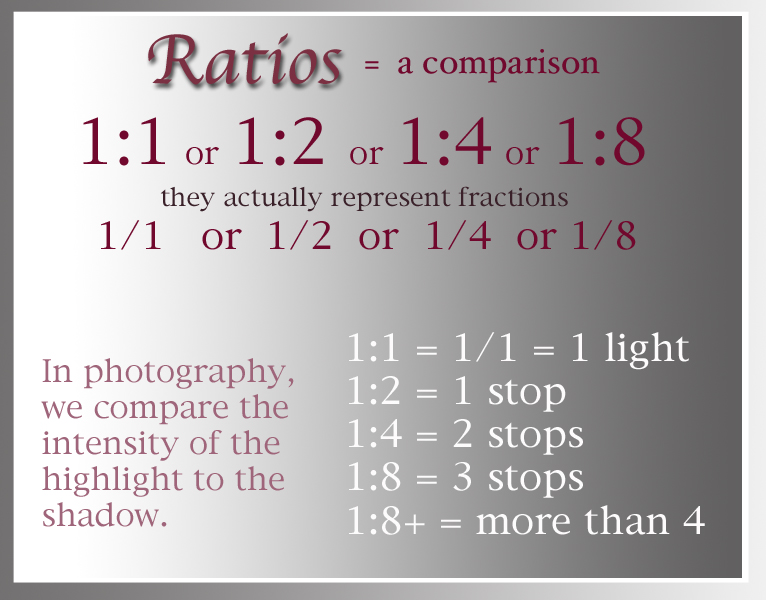
|
Lecture:
• Quality of Light and Ratios
• (cont) Alternate Light Conditions (from bright sunny day) - how
to determine approximate normal exposure variations using BEF formula.
.................Office flourescent light (+6 BEF)
.................Household indoor lighting (+8 BEF)
.................Bright downtown lit streets (+7 BEF)
.................City skyline (+13 BEF)
.................Fireworks (bulb setting, +6 BEF)
.................Store window displays ((+6 BEF)
• Research Projects
............Image
Analysis
........... Famous
Photographer
• Changing ISO's and how that effects exposure settings (BEF)
• Stock
Photo Agencies
Slide Show:
• Image
Analysis
Lab:
• Making a Print
• Printing Parameters
Homework
- Due: 3/6
1. Buy Epson Photo Paper and bring to class (and zips/CDs)
2. Start pulling Image Analysis samples (bring
to class)
Reading
• Handout: Digital readings
• Horenstein, "Photography"
- Chapter 1(tested in Mid-Term)
Photo
Assignment
• Final Hi / Low Perspective
#5 - Fear
(post-poned
one week)
|
|
Week
#7: 3/6
Announcements:
Spring
Showcase Poster Contest
Photography Categories (Coveted SoMA's):
Photojournalism/Editorial
Portraiture
Fashion
Landscape
Fine Art
Abstract
File>Page
Setup (command/shift/P)
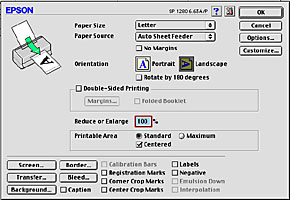
File>Print
(command/P)
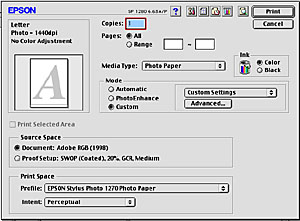
Custom...Advanced
Window
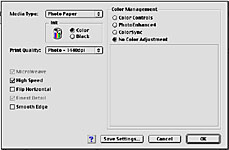
|
Lecture
• (cont) Changing ISO's and BEF's
• (cont) Quality of Light and Ratios
• (cont) Alternate Light Conditions (from bright sunny day)
- how to determine approximate normal exposure variations using BEF
formula.
.................Lighted Interior Arenas (+6 BEF)
.................Night Stadium Events (+6 BEF)
.................Night Amusement Parks (+6 BEF)
.................Indoor Gyms, Pools (+8 BEF)
.................Indoor Auditoriums (+9 BEF)
.................Candle Lit Subjects-close (+11 BEF)
.................Exterior Christmas Lights (+10 BEF)
• Stock
Photo Agencies (cont.)
• View more samples of Image Analysis that students bring in
Lab:
• Making a Print - (Scan One Image)
• Printing Parameters
Print Quality
1. Digital output quality is dependent upon 4 things;
a) Original Exposure (traditional or digital capture)
b) Scan Quality
c) File Management
d) Printing Parameters
LL#1 . . . Quality In = Quality Out
1. Expose Normal / Scan Normal (MASTER ARCHIVE FILE)
.....create over/under effects in Photoshop
2. Check for Robust Histograms (full tonal values - see 3/13)
.....continuous tone images should produce 'full' histograms; if not,
rescan
3. Purpose your MASTER ARCHIVE FILE for RGB desktop printers: Image>Image
Size
..... 300 ppi / 24MB file size for 8-1/2" x 11" photo
paper.
4. Minimize Information Loss during Image Manipulations
.....don't over adjust levels, curves, HSB, color balance, USM, etc.
5. Assign Proper Color Space - Adobe RGB 1998
.....Image>Mode>Assign Profile>Adobe RGB 1998
.....This allows the monitor preview to match output very closely.
6. Assign Proper Printing Parameters (see Lab)
.....Command/Shift/P (for page setup); Command/P (for print)
7. All digital prints require subtle sharpening (future lecture).
8. All images for the web require optimized sharpening
9. Sharpen as a Last Step Before Printing.
Printing
Parameters w/in Photoshop
To create a print that matches what you see on the monitor:
1. Select Page Setup - Command/Shift/P or File>Page Setup
.....Orientation: Portrait (Standard) or Landscape (Centered)
2. Select Print - Command/P or File>Print
.....Media Type: Photo Paper
.....Ink: Color
.....Source Space: Adobe RGB 1998
.....Paper Space:
..........Profile: Epson Stylus 1270 Photo Paper
..........Intent: Perceptual
.....Mode: "Custom" ... Click Advanced ... in new window check:
..........Color Management: click 'NO COLOR ADJUSTMENTS'
..........Media: Photo Paper
..........Print Quality: 1440
.....Click "OK"
..........Double check printing settings (in box or upper left area)
.....Click "Print"
Homework
- Due:
3/13
• Continue Image Analysis work
• Start reviewing for MIDTERM EXAM
(week of March 25th)
Reading
• Daly, "Digital:Handbook" - chapter 1-3
• Horenstein, "Photography"
- review pre-assigned chapters
Photo
Assignment
• Final "Success/Failure"
#6 - Fear
|
|
Week
#8: 3/13
PHOTOSHOP
'LEVELS' HISTOGRAMS
[Image>Adjust>Levels or Command L]
Underexposed Histogram ... Levels Corrected Histogram

|
Lecture:
• Midterm Exam Preparation
Lab:
USM
METHOD #1 - LAB
1. Flatten Image
.....Layers Window>[arrow] Flatten
2. Convert to LAB Mode
..... Image>Mode>LAB
3. Select Lightness Channel
..... Layers Window>Channels>Lightness
4. Select USM
.....Filters>Sharpen>Unsharp Mask
.....Amount: 125% / Radius: 1.5 / Threshold: 3
5. Convert back to RGB
.....Image>Mode>RGB
6. Print
Homework
- Due:
3/20
• Final: Fear w/ Humor
• Continue Image Analysis work
• Review for MIDTERM EXAM (week of March 25th)
Reading
• Daly, "Digital:Photography:Handbook" - review ch. 1-6
• Horenstein, "Photography"
- review pre-assigned chapters
New
Photo Assignment - Final Due 3/20 (one week only)
#7 - Redo
Choose one of the first four assignments (Chairs, Ord./Extra-
ordinary Object, Hi/Low, Success/Failure) and redo the conceptual component.
Do not repeat technical exercise; just concentrate on a brand new conceptual
solution.
|
|
Week
#9: 3/20
Who made this photograph???
...
and
...how would you analyze this iMac ad
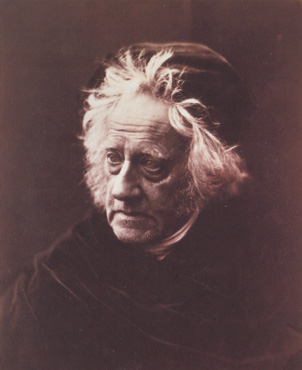 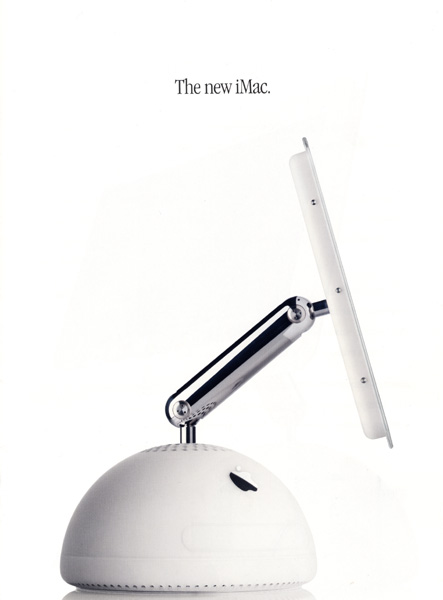
{Click
& hold down on image to open it into a new window}
Definitions:
1.
Specular Hightlight - mirrored image of
light source.
2.
Diffused Highlight - that area where true
tonality resides.
3.
Shadow - that area where darker than true
tonality resides.
|
Lecture:
• MidTerm Review;
go over examples from MidTerm Prep document; slide identifications (photographers,
dates)
• Image Analysis Review - iMac
ad
• To Determine Specular or Diffused Light:
.........1. Examine shadow edge transfer
...................soft edge SUGGESTS diffused light sources
...................hard edge SUGGESTS specular light sources
.........2. Then confirm by examining specular highlights
...................small catchlights mean specular light source
...................large catchlights mean diffused light source
• ISO
Scale - Exposure Control Device
• Kelvin
Color Temperature of Light
• Famous Photographers Resource
---
SUGGESTION: Use your Photography textbook
(Horenstein) as a starting point for discovering photographers whose
work you may be interested in researching (the
textbook is now in SBCC's library).
Lab:
Complete Print Exercise
Homework
- Due:
3/27
1. Type-written
paragraph on Famous Photographer Research Project (who, why and what
you're doing -- duplicating an existing image of this photographer or
shooting 'in the style' of this photographer).
• Continue Image Analysis work
• Study for Midterm Exam next week
Review
Review Horenstein (ch. 1-9) & Daly (ch. 1-6) readings
New Photo Assignment
# 8 -
Family as Inanimate Object -
Due 4/10
Click "Family" (above)
to see the assignment sheet;
then ...
Go to Adobe's 2001 Student Design Achievement Awards page and review
the work of Kristi
Keinholz, titled "Pears", in the 'Photography' category.
Click on her Artist Statement first to understand the artist's premise
and then review her work.
Announcement:
4/10 Class
(right after Spring Break)
Please bring in 3 magazines and 5-10 personal items for an in-class
exercise.
|
|
Week
#10: 3/27
|
MIDTERM
EXAM - class starts @ 10am
• Due
today:
Paragraph on the photographer you intend to research for the Famous
Photographer Research Project (who, why and what you're doing -- duplicating
an existing image of this photographer or shooting 'in the style' of
this photographer)
Homework
- Due:
• Continue Image Analysis work
Photo
Assignment - Due 4/10
• Family as Inanimate Object
Announcement:
4/10 Class
(right after Spring Break)
Please bring in 3 magazines and 5-10 personal items for an in-class
exercise.
|
|
SPRING
BREAK
 , , ,
, , , , ,
, ,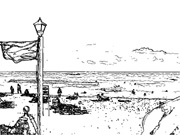
Announcement:
4/10 Class
Please bring in 3 magazines and 5-10 personal items for an in-class
exercise.
SoMA
Showcase - May 24, 2002
click here
for
Submissions
/ Deadlines
|
APRIL 1 - 5
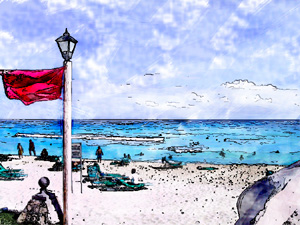
Homework: Due
4/10
• Complete
Image Analysis
• Family - Inanimate
Object
|
|
Week #11: 4/10
• SUBMISSIONS
FOR SoMA SHOWCASE
May 8th
• The
power of photojournalism - subjects revisted
• National
Geographic - Sharbat
Gula after 17 years
• USA
Today article;
the photographer
Steve McCurry
|
In-Class Exercise
Please
bring in 3 magazines and 5-10 personal items for an in-class exercise.
Homework
- Due Today
1.
Image Analysis Assignment
Reading
Horenstein, "Photography"
- Chapter 17
Due
4/17
• Finals: "Family as Inanimate Object"
|
|
Week #12: 4/17
Ansel
Adams Documentary
PBS Special
Sunday, April 21st @ 9:00pm
SoMA
submissions - due
5/8
Photojournalism . . . Fashion . . . Portrait
Landscape . . . Abstract . . . Fine Art . . . Still Life
•
Visual Grammar -
SEE (objective/formal); THINK
(cognitive/story telling) and FEEL (emotions)
-- there are no new subjects, great photographs are RESTATEMENTS
WITH A DIFFERENCE.
•
John Szarskowski's
great photograph: GETBVS
Grace, Economy, Tension, Balance, Visual Wit, Surprise.
•
Visual Interest + Concept + Emotional Response = MEMORABILITY
•
Big 'MAC' Theory
- Mystery, Ambiguity,
and Contradiction.
|
Lecture:
• PHOTO
STORY
• Famous Photojournalists
/ Documentary Photographers
• Sabastian Salgado
Exhibition Site (QuickTime VR); Brassai;
Margaret Bourke-White,
Diane Arbus
quote.
• Eugene
Atget, Lewis
Hine vs. Jacob
August Riis, W. Eugene
Smith
• Duane Michals
- "The problem with young photographers today is that they have
all the know-how, but they have nothing to say; they just regurgitate
cliché."
• Michael Ackerman
- "... if you are not brought up where you are born you are forever
a little restless. [it clarifies]...what it means
to be an outsider, to not belong, yet have some strong feelings
towards where you are. For one thing, it means
you are a guest and what you are after is unattainable. Maybe you are
always looking for yourself. It does seem to me that as an outsider
you often get deeper inside. You often see what others may be blind
to. For example, classic reportage photograpy, with its beginning -
middle - end narrative is completely boring to me. It lacks something
so essential. Yet work done by certain photographers who have that reslessness,
that feeling of not belonging, like Louis Faurer, Robert Frank, Leon
Levinstein, Josef Koudelka, for example, I find fascinating. Its open
eded. The more I look at it the more I see. For
me it's important to show what life FEELS like, not what it looks like.
Maybe that quest is for the truth that lies beyond the fact, beneath
the skin. That thing that is true to everyone."
Lab:
• "Family"
2D Triptych / Collage
Homework
- Due: 4/24
Photo
Assignment
• Photo Story - 3 to 5 images telling a 'story' about
how somethings ... not how it looks....
|
|
Week
#13: 4/24
SoMA
submissions - due
5/8
Photojournalism . . . Fashion . . . Portrait
Landscape . . . Abstract . . . Fine Art . . . Still Life
|
Lecture:
• Toy Cameras (some sites
and journals)
Lab:
• Self-Portrait Triptych
• Selections for SoMA Showcase
Homework
- Due: 5/1
Photo
Assignment
• Toy Camera
1. Work with a 'toy camera'
of choice (Holga,
Polaroid, cheap digitals, Diana, pinhole,
stereoscopics, underwater, panoramics...)
2. Theme: open
3. Create something extraordinary.
4. Requirements: Have F•U•N
.......... (Fantasy / Unexpected / New)
|
|
Week
#14: 5/1
SoMA
submissions - due
5/8
Photojournalism . . . Fashion . . . Portrait
Landscape . . . Abstract . . . Fine Art . . . Still Life
|
Lecture:
• 10-Print Final Portfolio - Preparations
.......Edit and Spot (rubber stamp @ 200%)
.......Retouch (selective burn/dodge techniques) * DEMO
.......File management for prints (300 ppi)
.......Paper selections (Epson only)
..............Heavy Weight Matte (all printers)
..............Premium Gloss/Semi-Gloss (870's/1270)
.......Portfolio options
• New Quad Ink Printer - for true B&W output
.......carbon-based pigment (4 shades of grey)
.......Jon Cone Edition ink set
.......must get image approval; instructor operated.
Links
of Interest:
dip·tych Pronunciation Key (dptk)
n.
1.A work consisting of two painted or carved panels that are hinged
together.
2.An ancient writing tablet having two leaves hinged together.
3.A list of names, originally contained on such a tablet, of living
and dead Christians for whom special prayers are made during
the liturgy in many eastern and western churches.
trip·tych Pronunciation Key (trptk)
n.
1.A work consisting of three painted or carved panels that are hinged
together.
2.A hinged writing tablet consisting of three leaves, used in ancient
Rome.
• "Family" 2D Triptych / Collage
http://perso.wanadoo.fr/nce-photo/pages/larjosto/acctracks.htm
http://www.cake.de/kaiser/wallviews.html
http://01interactions.net/winfredevers/fg04.htm
• Self-Portrait Triptych and Selections for SoMA Showcase
http://www.kfki.hu/~arthp/html/b/bosch/painting/triptyc1/
http://www.kfki.hu/~arthp/html/b/bosch/painting/triptyc2/
http://www.imagesoftheland.com/html/triptychs1.stm
http://www.bonniebergman.com/Art_Gallery_Details.cfm?LinkType=Triptychs
http://www.giraffe.com/Triptychs.html
http://www.ferrisphotographs.com/toc.triptychs1.html
http://www.cindymcintyre.com/Galleries/triptychs.htm
Critique:
• Photo Story (finals)
• Toy Camera (work in progress
Lab:
• Self-Portrait Triptychs
• SoMA Submissions
• Select final portfolio submissions
Homework
- Due: 5/1
• SoMA Submissions NEXT Friday, May 10th at Noon
• Toy Camera - final NEXT WEEK
• Self-Portrait - Due 5/15
*****
QUIZ preparation - ch. 17
Photo
Assignment
• Toy Camera (continued)
|
|
Week
#15: 5/8
SoMA
SHOWCASE submissions
- EXTENDED
... ... NEW DEADLINE - FRIDAY (5/10) at NOON ... ...
Photojournalism . . . Fashion . . . Portrait
Landscape . . . Abstract . . . Fine Art . . . Still Life
|
Lecture:
• Two new Sharpening Techniques
RGB Channels USM Method
1. Select Red Channel (in Layers window)
........a) Filter>Sharpen>Unsharpen
........b) 125% / 1.5 / 3
2. Select Green Channel (in Layers window)
........a) Filter>Sharpen>Unsharpen
........b) 125% / 1.5 / 3
3. Select Blue Channel (in Layers window)
........a) Filter>Noise>Despeckle
4. Make Snapshot in History PaletteB.
High Pass Filter Method
1. Duplicate background layer
2. Select High Pass Filter and run at 2-5
........a) Filter>Other>High Pass
3 . Unsharpen at 125% / 1.5 / 3
........a) Filter>Sharpen>Unsharpen
4. Blend layer to either Soft Light or Overlay
5. Make Snapshot in History PaletteC.
Lab Method USM
1. Duplicate background layer
2. Select Lab Color Mode
........a) Image>Mode>Lab
3. Select Lightness Channel (in Layers window)
........a) Image turns B&W
4 . Select USM Filter
........a) Unsharpen at 125% / 1.5 / 3
........b) Filter>Sharpen>Unsharpen
5. Convert back to RGB (Image>Mode>RGB)
6. Make Snapshot in History Palette
• Scanning suggestions
• Review SoMA submissions
Critique:
• Toy Camera Finals
Lab:
• SoMA Showcase Submissions - due Friday Noon
• 10 - Print Final Portfolio
Homework
:
• work on final portfolio
• study for final exam
|
|
Week
#16: 5/15
|
Lecture:
• Review for Final Exam / MidTerm Prep Sheet
plus Chapter 17.
• Final Sharpening Technique (12 Step Method)
...............Lab USM Method
...............High Pass Filter Method
...............RGB Channel Method
RED Channel / Edges Selection Method
• This technique selects the edges with the most contrast without
selecting the homogenous areas of tone (less chance of creating non-descript
artifacts). Only the more “contrasty” edges are sharpened
and will be the most subtle USM method. Good for people and images with
fine detail.
1. Select the Red Channel
2. Duplicate the Red Channel.
3. Filters – Stylize – Find Edges
4. Image – Adjust – Invert
5. Filters – Noise – Median, radius @ 2
6. Filters – Other – Maximum, radius @ 4
7. Filters – Blur – Gaussian Blur @ 4 (airbrush any spots
out at this stage)
8. Click RGB layer and Cmd/Click the 'Red copy' (the new alpha channel
you've been working on). This selects the areas of highest contrast
as a selection.
9. Filter – Unsharp – set amount at 125%, radius at 0.3, and
threshold at 3 (in a digital capture try a setting of 75%, radius 1.5,
threshold 3).
10. Deselect
11. Alpha channel to trash
12. Repeat for increased sharpness if necessary.
Additional Suggestion:
• If sharpening effect is too intense, start over and adjust the
unsharpen threshold to a value of 1.
• Make an Action function key out of these steps and you can repeat
this effect progressively at will by hitting the pre-assigned function
key.
Lab:
• 10 - Print Final Portfolio
Homework
:
• study for final exam (NEXT week)
• work on final portfolio
|
|
|
|
Week
#17: 5/22
|
FINAL EXAM
Lab:
• 10 Print Final Portfolio
|
|
|
|
Week: 5/29
|
FINAL PORTFOLIO
REVIEW
HAVE A GREAT
SUMMER !
|
|
|
|
|
*
|
Schedule content
and projects may be changed by instructor |
|
|









 , , ,
, ,
, , ,
, ,
